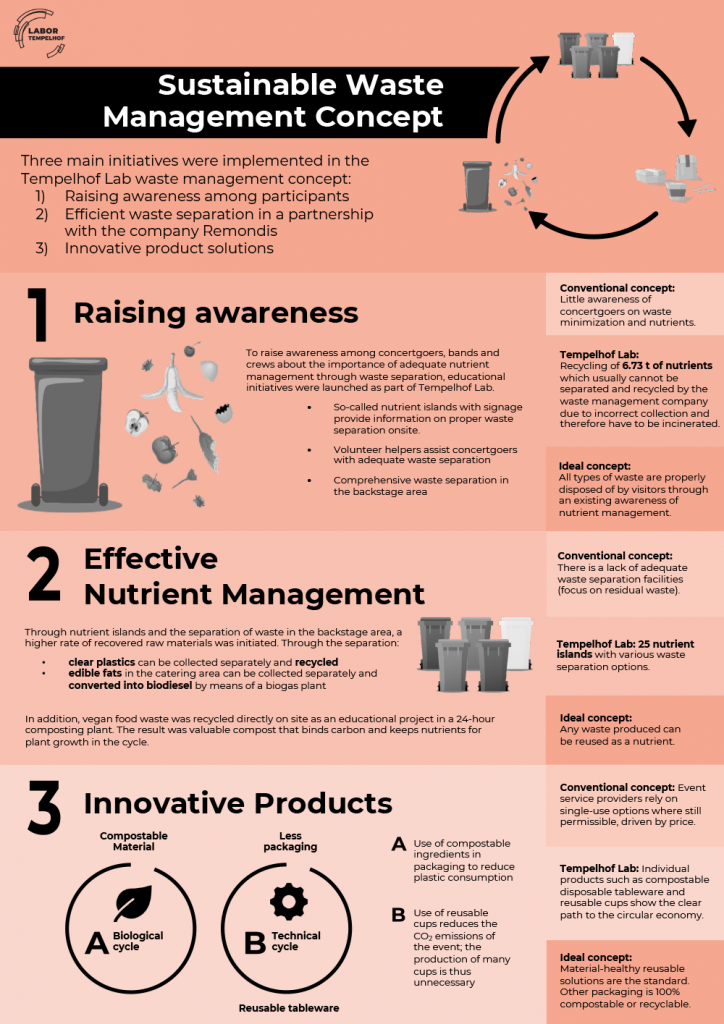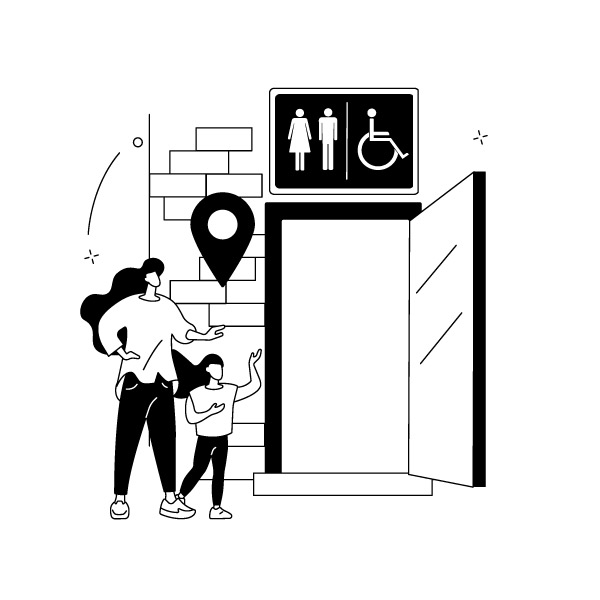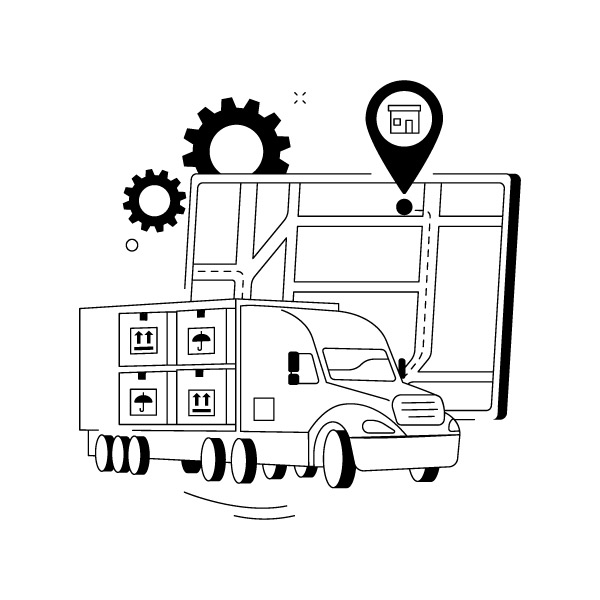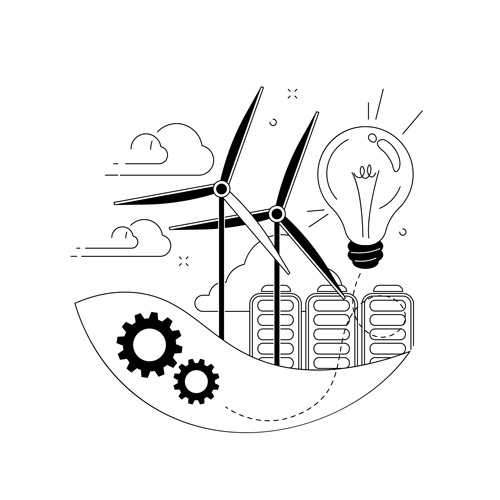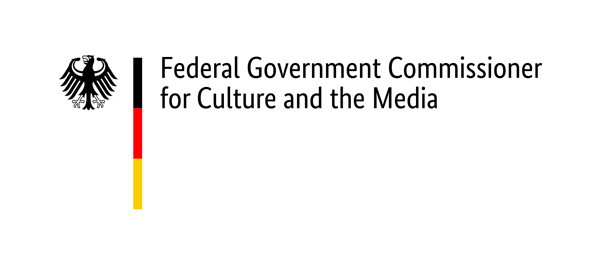Waste Management & Nutrient Circularity
Waste Management &
Nutrient Circularity
Content
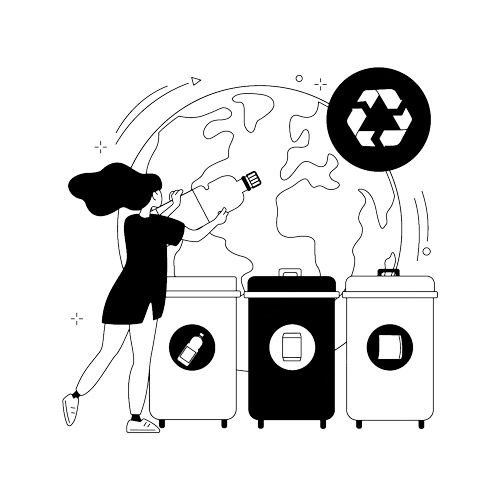
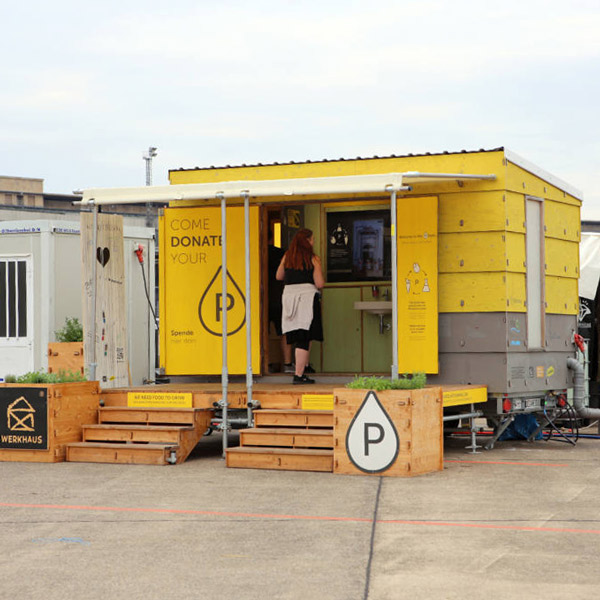
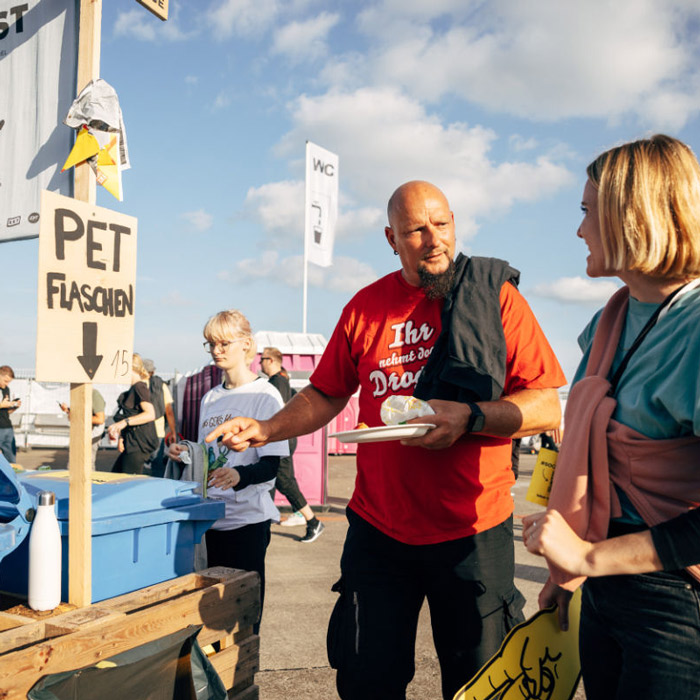

1. Overview and problem statement
Did you know…?
In 2021 in Germany, around 13% of all materials were reused as part of the circular economy. For this portion, no new raw materials had to be extracted. In countries with a more advanced circular economy like the Netherlands, the rate was 33%.32
Properly used, waste serves as a nutrient again and again and can be used as a resource for something new. The problem: most products today are not designed to circulate continuously in our economy. So at some point they become waste, whether in everyday life or at major events.
On average, 1.5 kilograms of waste are produced per person per day at a festival. Extrapolated to 60,000 people in a field that generates huge mountains of trash. However, 1.5 kilograms of trash is only 200 grams more than we generate on average in our everyday lives. At home, however, we are much more conscious about separating waste and also have a more or less functioning waste management system. 33
The bigger the event, the more visible the waste generated onsite and the more complicated the separation of the waste, both for participants before and behind the stage. At the same time, there is a great opportunity to avoid waste and promote awareness that waste can be a reusable resource in a circular economy.

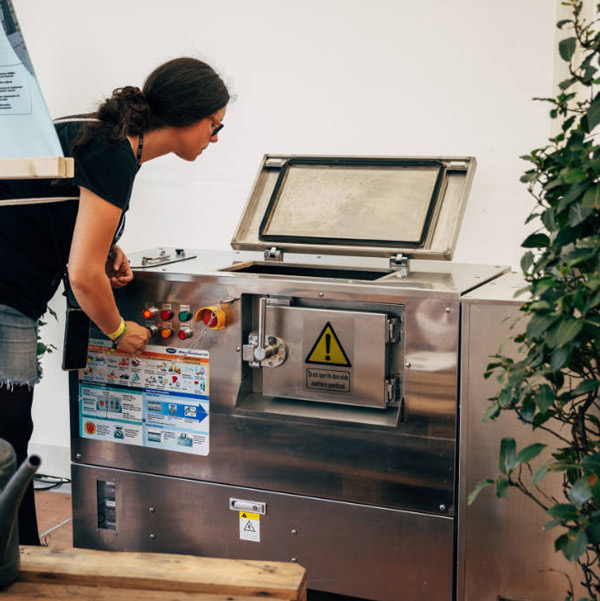

2. Our Benchmark for Tempelhof Lab
At Tempelhof Lab, we attempted whenever possible, to consider waste as a nutritional substance for something new and not as worthless garbage. Unfortunately this is still not 100% achievable today, so a good waste management system is still required to properly separate the resulting waste.
- Use as many recyclable products as possible throughout the project: In the production of the concerts, in the audience area, but also in the other project components.
- Where waste is unavoidable: Separate in such a way to make reuse, recycling, and composting possible. Avoid garbage destined for a landfill as much as possible.
- Recycle food scraps through onsite composting projects and industrial composting. Recycle nutrients from solid and liquid toilet waste to produce phosphorus fertilizer and humus.
- Ideally, implement reusable dishes and cups everywhere with a fund deposit system to avoid single-use waste.
- Visibility, education and gamification: well-placed, visible waste stations with simple and understandable signage and, ideally, gamified elements. Proper waste separation should be made as easy as possible.
3. What worked well, what can be improved?
At Tempelhof Lab, various measures were taken to address waste, circular economy and reusing resources:
Waste Disposal in Public Areas:
What worked well?
- Creation of a comprehensive waste system in cooperation with Remondis. In public areas waste was separated into the following categories: Food waste, residual waste, PET bottle collection, biodegradable disposable tableware.
- Advance communication with the public via website and ticket about which materials were permissible to bring onsite.
- Raise awareness onsite through 25 personally supervised waste stations (so-called “nutritional substance islands”). Voluntary ambassadors of C2C NGO supervise the waste stations at peak hours to minimize improper disposal and clarify correct garbage separation and the circularity concept/C2C goals for concerts.
- Reusable deposit mug for beverages.
- Educational project: 24-hour direct composting facility in which small amounts of vegan food waste were turned into compost.
- Use of biodegradable disposable mono-material tableware as an alternative to reusable dishes. Test trial with composting toilet manufacturer Finizio and the ZirkulierBar research project on the compostability of biodegradable disposable tableware.
- Briefing of the catering contractor about the waste disposal system for further communication to the food vendors.
What can be improved?
- Too many materials end up in the garbage; the faulty disposal rate in the “nutritional substance island” could have been lower.
- Allowing only PET bottles on the premises; no tetrapacks, as these are not recyclable.
- Use of reusable tableware as a recyclable solution.
- Coordinate waste generation immediately outside the concert venue. The proportion of glass/refundable bottles brought in was underestimated.
Disposal Concept Production, Gastronomy & Merchandise:
What worked well?
- Creation of an extensive waste disposal system in cooperation with Remondis. The separation categories in the backstage-/ production area were:
- Food: PPC (paper, paper board, carton), plastic bags, glass, food leftovers and used grease, residual waste
- Production: PPC, plastic bags, glass, residual waste
- Merchandize: Residual waste, PPC
- Immediately in front of the event site: glass, residual waste.
- On-site commercial yard with staff supervision and multiple trash compactors.
- Separation in the commercial yard into nine categories:
- Residual waste, reusable material, organic waste, PPC, glass (white/colorful), food leftovers, used grease, compostable waste, wood.
- Recording of materials and material flows, subsequent evaluation and oversight by Remondis.
What can be improved?
- Discussions/ visits with employees in production, food stalls and other service providers about waste disposal system and separation categories instead of offering only a written briefing.
- Better labeling of bins in the backstage-/ production area.
- Reusable coffee cups in the backstage area were partially disposed of or only used once (loss of nearly 30%). Strong focus on bringing reusable cups over providing reusable cups onsite.
- Continuous oversight of recycling bins is necessary, in order to guarantee a purely sorted separation.
- Avoid additional waste generated by issuing admission wristbands.
4. Findings and Recommendations
- Waste disposal system in public areas and back stage-/ production areas was comprehensive and accompanied by educational exhibits for concertgoers. In total the waste system reduced CO₂ emissions by nearly 4.9 tons. Nevertheless, even the best waste system for one event cannot eliminate the structural problems with waste disposal or completely avoid improper disposal by individuals.
- Public area: Allow only fully recyclable materials to be brought in (e.g., PET bottles), as these can be collected and recycled. Do not allow non-recyclable products such as tetra packs. These measures must be communicated clearly and broadly to the public in advance. The fewer problematic materials that are brought to the event, the more effective the waste system.
- Backstage/ production: The crew should be informed in advance exactly which materials/products are recyclable and which materials should be avoided. This can be done through individual discussions, briefings, material checklists, sustainability principles, etc. and is the responsibility of the event organizers and the venue. Inform all employees in multiple ways about the requirements for waste separation. It is advisable to have a point person on waste disposal for each industry involved. It is also a good idea to connect all onsite service providers with one point person for any questions about the waste system.
- When designing the waste disposal system, always consider the outdoor area in front of the entrance and do not underestimate the volume of waste there in the form of glass bottles, deposit bottles, PET bottles and tetra packs. A residual waste garbage bin with proper labeling, distinguished by color, should also be placed next to each glass recycling bin.
- The better the waste stations in the audience area and backstage/production area are labeled (by lettering, colors, pictograms at eye level…), the better waste separation works.
- Staffing the waste stations further reduces the rate of misplaced waste. It can be worthwhile to combine the waste system in the public areas with educational exhibits, if there is sufficient personnel. NGOs can also be approached for support.
- For the waste system design, strategically place waste bins and make them visible. For example, near the food stalls, and marked with high-flying flags.
- In the commercial yard: ensure continuous oversight to prevent misdirected waste. If no qualified personnel are onsite, close the commercial yard.
- Cigarette butts should be collected separately; there are collection systems already available with gamification elements.
- Waste separation and disposal in Germany are very complex issues. Our experience from the project shows that people are already overwhelmed by numerous bins and waste categories used at home. At the same time, more precise waste separation leads to better disposal and thus to a better climate- and resource-balance.
- By evaluating the waste quantities after the event, important conclusions can be drawn for improving the waste disposal at future events.
- The question of how much waste is generated from the food service industry is directly related to the question of how food and beverages are served.
- Priority should always be for a reusable system.
- Reusable systems for tableware must be planned in advance with all service providers.
- Setting up a waste deposit fund system for food vendors can motivate them to separate waste.
- Additional waste often arises in places that are hardly considered in advance. Not every well-intentioned solution is really good from a resource and climate perspective.
- In the case of paper admission wristbands with adhesive strips, the covering film of the adhesive strip generates waste. This must be taken into account and collected at the issuing points, otherwise this waste ends up in the environment.
- RFID chips in festival wristbands are electronic waste and therefore hazardous waste – which is why separate collection and processing is necessary.
5. Service Provider Contacts
- Remondis disposal and purification
- 24-hour composting installation of Papstar
- Compost toilet: Finzio
- Research project Zirkulierbar

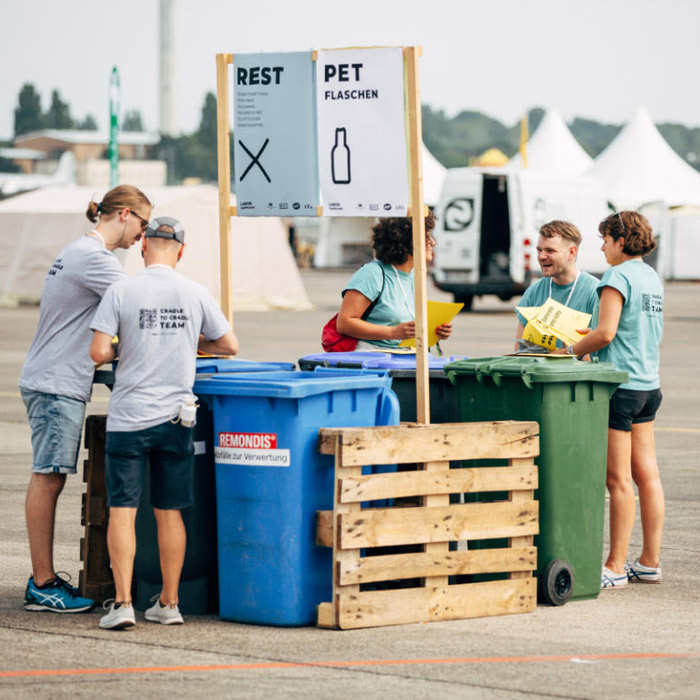

6. Further inspiration from the industry
The Futur2 Festival in Hamburg (capacity 5,000) has strict sustainability standards and produces – after sorting out recyclable material such as glass bottles – only 36g of waste per day per visitor. The festival’s goal is to become 100% waste-free. However, it must be mentioned that the Futur2 Festival does not have a camping area and thus the amount of waste is generally lower than at multi-day festivals with camping. 34
Since 2022, the Roskilde festival (capacity 130,000) has been using partially pre-installed tents, in order to avoid the waste of left behind camping equipment. In addition, the festival uses a large-scale communications campaign to ensure simple and correct waste disposal, with slogans like ”Leave No Trace” or “Clean and Loud Campsite.” 35
German Protestant Church Day (capacity around 300,000) has consistently used reusable materials since the 1980s, avoiding 280,000 single-use plastic cups, plates and cutlery each year. All items used are provided with a deposit system and are either washed onsite by the reusable tableware service provider or transported back to the manufacturer if it is located close enough to the washing center. 36

